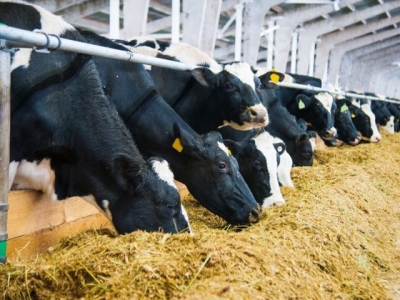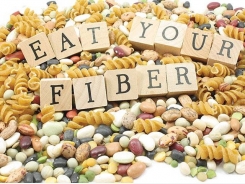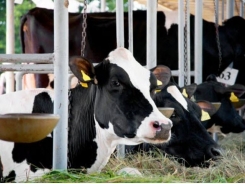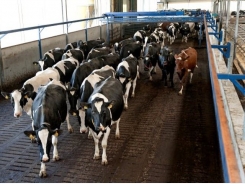Danish team show benefits of barley substitution with glycerol in dairy feed

Glycerol, as an energy feed, can substitute barley up to 12% of dietary DM for dairy cows in mid or late lactation without affecting milk quality, according to a Danish study.
Photo: GettyImages/Grigorenko
However, including more than that might decrease energy correct milk (ECM) yield, Mogens Vestergaard et al, the Aarhus University research team.
“Milk yield decreased whereas milk fat and protein content increased with increasing proportion of glycerol in the diet,” they said.
The effects of glycerol inclusion on taste of fresh and stored milk were marginal, added the researchers.
The work, funded by the Danish Milk Levy Fund with contributions from AgroTech, DLG, Arla Foods, and the Danish Cattle Research Centre, was published in Livestock Science.
It aimed at determining the level at which glycerol can substitute barley in grass-clover silage-based rations for dairy cows in mid or late lactation, without affecting milk production, milk composition, milk free fatty acid (FFA) profile, and milk sensory quality.
1/ Background
Glycerol is a by-product of base-catalyzed transesterification of oil in the formation of methyl and ethyl fatty acid esters from the production of biodiesel. Around 0.92 kg of crude glycerol is produced for every 10 L of biodiesel produced (Donkin et al., 2009).
The use of glycerol in livestock diets, ruminants in particular, is not novel, but the researchers said there is renewed interest in it as livestock feed due to its increased availability and cost effectiveness (Quispe et al., 2013).
There are already several studies showing the effects of feeding glycerol to dairy cows, either fed as an energy supplement but they mainly focus on first time calving heifers or cows in the transition period, said the authors.
To their knowledge, only Donkin et al. (2009) and Hvelplund and Weisbjerg (2011) supplied cows in mid-lactation with high levels of glycerol. Donkin et al. (2009) reported that glycerol could replace corn grain in diets for lactating dairy cattle up to at least 15% of dietary DM, without adverse effects on milk production or milk composition, said the researchers.
“In Hvelplund and Weisbjerg (2011), glycerol fed at 17% dietary DM had a negative effect on milk production compared to [sodium hydroxide] NaOH treated wheat. Ariko et al. (2015) also found that the proportion of odd chain free fatty acids (FFA) in milk fat increased in response to increasing glycerol proportion in the diet (glycerol levels tested were 5.2%, 10.4%, and 15.6% on DM basis).
“The aforementioned study seems to be the only one to report experimental results with glycerol replacing barley (a typical grain in the diets of Northern EU cows) and not corn, but does not report the effect of this substitution on milk yield, milk composition, and sensory quality. This is quite important as previous studies found off-flavors in milk when adding by-products in the cows’ ration (Kidmose et al., 2009).”
2/ Method
Some 40 Holstein cows were used in a 4 × 4 Latin square experimental design. Crude glycerol substituted barley in the partially mixed ration (PMR) of the cows at inclusion levels of 0% (Gly0), 6% (Gly6), 12% (Gly12), and 18% (Gly18) of dietary dry matter (DM).
The team said they recorded individual milk production, feed intake, and milking frequency daily, while milk composition and milk fatty acid levels were analyzed weekly. They performed sensory analysis on fresh and seven day stored milk samples for the four diets.
3/ Results
The PMR intake increased almost 1 kg from Gly0 to Gly12, and decreased by approximately 1 kg from Gly12 to Gly18. Concentrate intake at the automated milking unit tended to decrease by half a kg from Gly0 to Gly6, said the authors.
Milk yield decreased linearly with increasing proportions of glycerol in the diet while fat and protein contents in milk increased, they found. “This resulted in a quadratic effect of dietary glycerol level on energy correct milk (ECM) yield, with maximum yield with Gly6 and the lowest yield with Gly18.”
The Aarhus University researchers said protein and lactose yields decreased linearly with increasing proportions of glycerol in the diet. “With increasing glycerol proportion in the diet, palmitic acid, oleic acid, linoleic acid, linolenic acid, and conjugated linoleic acid proportions in milk decreased linearly, while most of the short and medium chain FFA proportions in milk increased,” they said.
Source: Livestock Science
Authors: C Gaillard, MT Sørensen, M Vestergaard, RW Weisbjerg, M Krogh Larsen, H Martinussen, U Kidmose, J Sehested
Related news
Tools

Phối trộn thức ăn chăn nuôi

Pha dung dịch thủy canh

Định mức cho tôm ăn

Phối trộn phân bón NPK

Xác định tỷ lệ tôm sống

Chuyển đổi đơn vị phân bón

Xác định công suất sục khí

Chuyển đổi đơn vị tôm

Tính diện tích nhà kính

Tính thể tích ao




 Research Reveals Current Cattle Injections Increase Risk of…
Research Reveals Current Cattle Injections Increase Risk of…  Health: First things first
Health: First things first